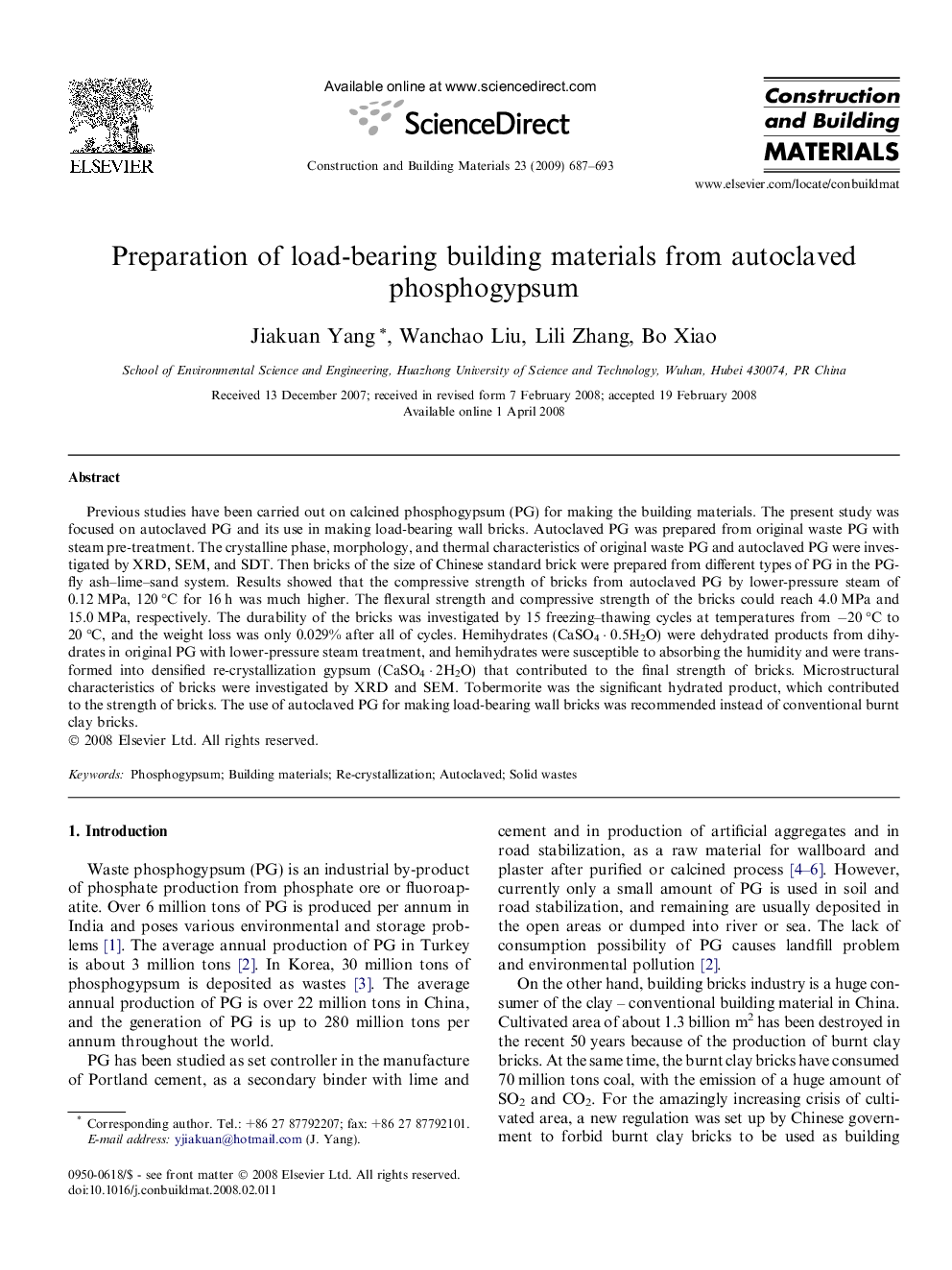| Article ID | Journal | Published Year | Pages | File Type |
|---|---|---|---|---|
| 260577 | Construction and Building Materials | 2009 | 7 Pages |
Previous studies have been carried out on calcined phosphogypsum (PG) for making the building materials. The present study was focused on autoclaved PG and its use in making load-bearing wall bricks. Autoclaved PG was prepared from original waste PG with steam pre-treatment. The crystalline phase, morphology, and thermal characteristics of original waste PG and autoclaved PG were investigated by XRD, SEM, and SDT. Then bricks of the size of Chinese standard brick were prepared from different types of PG in the PG-fly ash–lime–sand system. Results showed that the compressive strength of bricks from autoclaved PG by lower-pressure steam of 0.12 MPa, 120 °C for 16 h was much higher. The flexural strength and compressive strength of the bricks could reach 4.0 MPa and 15.0 MPa, respectively. The durability of the bricks was investigated by 15 freezing–thawing cycles at temperatures from −20 °C to 20 °C, and the weight loss was only 0.029% after all of cycles. Hemihydrates (CaSO4 · 0.5H2O) were dehydrated products from dihydrates in original PG with lower-pressure steam treatment, and hemihydrates were susceptible to absorbing the humidity and were transformed into densified re-crystallization gypsum (CaSO4 · 2H2O) that contributed to the final strength of bricks. Microstructural characteristics of bricks were investigated by XRD and SEM. Tobermorite was the significant hydrated product, which contributed to the strength of bricks. The use of autoclaved PG for making load-bearing wall bricks was recommended instead of conventional burnt clay bricks.
